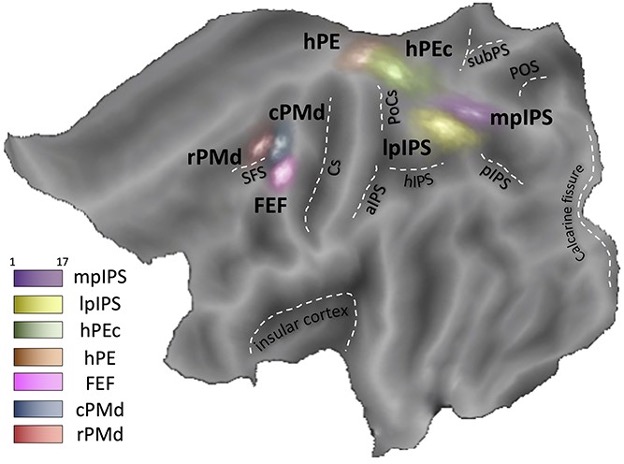
This paper details the functional organization of posterior parietal cortex, delineating fronto-parietal networks for visuomotor tasks. Identifies distinct regions: lateral lpIPS (saccades, linked with FEF) and medial mpIPS (pointing, linked with PMd). Dynamic causal modeling shows effector-specific modulation of interactions within networks during similar movements.
F. Bencivenga, M. G.Tullo, T. Maltempo, A. von Gal, C.Serra, S. Pitzalis, G. Galati In this new paper, we draw a thorough picture of the large-scale functional organization of the posterior parietal cortex to disentangle the fronto-parietal networks mediating visuomotor functions. We describe a functional distinction between a more lateral region in the posterior intraparietal sulcus (lpIPS), preferring saccades over pointing and coupled with the frontal eye fields (FEF) at rest, and a more medial portion (mpIPS) intrinsically correlated to the dorsal premotor cortex (PMd). Dynamic causal modeling revealed feedforward-feedback loops linking lpIPS with FEF during saccades and mpIPS with PMd during pointing, with substantial differences between hand and foot. Despite an intrinsic specialization of the action-specific fronto- parietal networks, our study reveals that their functioning is finely regulated according to the effector to be used, being the dynamic interactions within those networks differently modulated when carrying out a similar movement (i.e. pointing) but with distinct effectors (i.e. hand and foot).